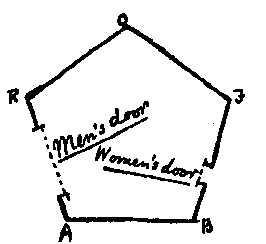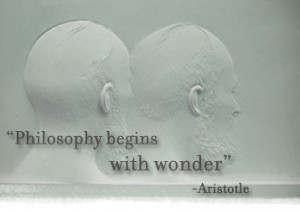
By: Jeremy Mydril
Historically, Edwin Abbott is perhaps best known as one the premiere 19th-century theologians of his time, writing multiple novels and texts about religion and grammar (exclusively). But he did also venture into fiction, if only briefly—actually only once—with Flatland: A Romance of Many Dimensions, which is a fusion of geometry, science fiction, satire, and social commentary. While first inclinations perhaps might suggest that Abbott’s novel about a two-dimensional square, aptly named A. Square, is a social satire about Victorian society, it also tends to indicate the balance that religion and science can at times find. Born in an era dominated by religious hegemony and strict delineation of classes, Abbott’s journey into the abstract world of Flatland—which sounds just as flat as you can imagine—comments on how religion, science, and politics mirror one another at times (or at least more times than we’d like to admit to).
In an age where there are two camps, one made of those religious folk and the other of those scientific folk, it’s at times hard to imagine a person claiming to be both, as Abbott’s Flatland tends to do. But if we at times shed the sanctimonious, petty squabbles of both camps, we could, like Abbott, arrive at a better understanding of what it means to live. For A. Square, the main protagonist of Abbott’s novel, despite his obvious dimensional shortcomings, is probably a better representation of mankind’s struggle than our own modern lives. Abbott is able to poetically reconcile religion and science into a wonderful story of intrigue that will keep you turning each page.
While perhaps it was not as celebrated as it was when it was first published (1884) or even today, it did share a renewed appraisal when Einstein first came out with his Theory of Relativity. For it was Abbott, almost thirty years before Einstein, who first mentions a fourth dimension and emphasizes the importance of time. And while it was Einstein that crafted one of the most importance scientific theories known to man, he probably could not have arrived at such a conclusion if it weren’t for Abbott’s Flatland (and work done by Euclid and Newton, as well).
And thus Flatland: A Romance of Many Dimensions should be celebrated not only by science fiction fans and mathematicians but all walks of life as commentary for the everyday individual: the Square. (Take that John Galt, you pretentious, dystopian goat-lover!) Any person wishing to understand about dimensions not necessarily seen, despite whatever translation you might take from it (be it religious or scientific, or both), then Flatland is a necessary launching point.
Flatland: A Romance of Many Dimensions by Edwin A. Abbott,



